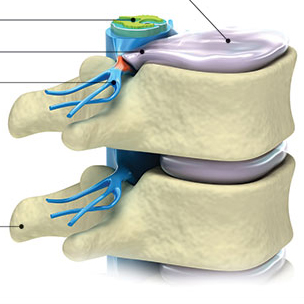Knee Bursitis
A bursa is a closed fluid-filled sac that functions as a gliding surface to reduce friction between tissues of the body. When a bursa becomes inflamed, the condition is known as bursitis. Most commonly, bursitis is caused by local soft tissue trauma or strain injury.
The knee joint is surrounded by three major bursae. At the tip of the knee, over the kneecap bone, is the prepatellar bursa. This bursa can become inflamed (prepatellar bursitis) from direct trauma to the front of the knee. This commonly occurs when maintaining a prolonged kneeling position, and has been called “roofer’s knee” or “carpet layer’s knee. A second bursa of the knee is located just under the kneecap beneath the large tendon that attaches the muscles in front of the thigh and the kneecap to the prominent bone in front of the lower leg. This bursa is called the infrapatellar bursa, and when inflamed, the condition is called infrapatellar bursitis.
A third bursa of the knee is the anserine bursa and is located on the lower inner side of the knee. This bursa most commonly becomes inflamed in middle-aged women. This condition is referred to as anserine bursiti and is particularly common in those who are obese.
Symptoms
Knee bursitis signs and symptoms may vary, depending on which bursa is affected and what precisely is causing the inflammation. In general, the affected portion of your knee may:
- Feel warm to your touch
- Appear swollen or feel squishy to your touch
- Be painful or tender when you move or put pressure on it
A sharp blow to the knee can cause symptoms to appear rapidly. But most cases of knee bursitis result from repetitive injuries, often sustained in jobs that require a lot of kneeling, so symptoms usually begin gradually and may worsen over time.
Causes
Knee bursitis can be caused by:
- Frequent and sustained pressure, such as from kneeling
- A direct blow to your knee
- Frequent falls on your knee
- Bacterial infection of the bursa
- Complications from osteoarthritis, rheumatoid arthritis or gout in your knee
Knee bursitis is a common complaint, but the following factors may increase your risk of developing this painful disorder.
- Excessive Kneeling. People who work on their knees for long periods of time, such as carpet layers, plumbers and gardeners, are at increased risk of knee bursitis.
- Participation in Certain Sports. Sports that result in direct blows or frequent falls on the knee, such as wrestling, football and volleyball, may increase your risk of knee bursitis. Runners may develop pain and inflammation in the anserine bursa, located on the inner side of your knee below the joint.
- Obesity and Osteoarthritis. Anserine bursitis, affecting the inner side of your knee below the joint, often occurs in obese women with osteoarthritis.
Treatment Options
Treatments for knee bursitis vary depending upon the patient’s individual needs. Non-surgical treatment may be effective and include:
- Corticosteroid injection. Your SBO orthopaedic surgeon can inject a corticosteroid drug directly into an affected bursa to reduce inflammation. The inflammation usually subsides rapidly, but you may experience pain and swelling from the injection for a couple of days.
- Antibiotics. If an infection has caused the knee bursitis, your SBO doctor will prescribe a course of antibiotic treatment.
- Aspiration. Your doctor may aspirate a bursa to reduce excess fluid and treat inflammation. He will insert a needle directly into the affected bursa and draw fluid into the syringe. As with a corticosteroid injection, aspiration may cause short-term pain and swelling.
- Physical therapy. Your doctor may refer you to one of SBO’s physical therapists, who can help you learn appropriate exercises to improve flexibility and strengthen muscles. This therapy may alleviate pain and reduce your risk of recurring episodes of knee bursitis.
If you have severe chronic bursitis and don’t respond to other treatments, your SBO orthopaedic surgeon may recommend that the bursa be removed surgically. After surgery, the knee should regain its flexibility in a few days and normal activities can be resumed in a few weeks.
Recovery
You can take a number of steps to avoid knee bursitis or prevent its recurrence. If you’re working on your knees or participating in sports that put your knees at risk, use padding to cushion and protect your knees. If you're on your knees for an extended period of time, take regular breaks to stretch your legs and give your knees a rest.








